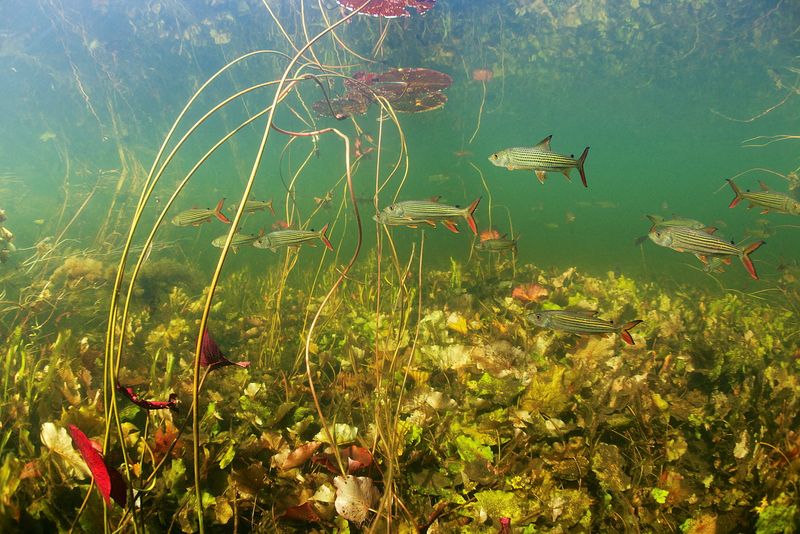By Will Dunham
WASHINGTON (Reuters) - Freshwater environments cover about 1% of Earth's surface while accounting for more than 10% of known species. Like many marine and terrestrial ecosystems, however, they are in distress. A new study looking at some of the denizens of freshwater habitats offers a stark illustration of this biodiversity predicament.
Researchers assessed the status of 23,496 species of freshwater animals in groups including fishes, crustaceans such as crabs, crayfish and shrimp and insects such as dragonflies and damselflies, finding 24% of them at a high risk of extinction.
"Prevalent threats include pollution, dams and water extraction, agriculture and invasive species, with overharvesting also driving extinctions," said conservationist Catherine Sayer, lead author of the study published on Wednesday in the journal Nature.
Sayer heads the freshwater biodiversity unit at the International Union for Conservation of Nature (IUCN), the organization that tracks the status of species globally.
Some of the freshwater species deemed at high risk bear exotic names such as the mini blue bee shrimp of Sulawesi, the Seychelles duskhawker dragonfly, the Atlantic helicopter damselfly of Brazil, the daisy burrowing crayfish of Arkansas and fishes such as the shortnose sucker of Oregon and California and the humpbacked mahseer of India.
The study filled a gap in data on freshwater biodiversity. The studied species were selected because their diverse positions within food webs present a holistic view of the health of freshwater ecosystems globally.
These species inhabit inland wetlands such as lakes, rivers, swamps, marshes and peatlands - areas that the researchers said have been reduced by more than a third since 1970. Other research has documented the status of mammals, birds, reptiles and amphibians that share these freshwater ecosystems and often face their own unique threats.
Of the animal groups investigated in the new study, the highest threat levels were documented in the crustaceans (30% threatened) followed by the fishes (26%) and the dragonflies and damselflies (16%).
"Freshwater ecosystems are ecologically important because of the diversity of species they support. Some of them may have high numbers of species that are restricted just to those systems - a single lake or pool or river," said Northern Arizona University freshwater conservationist Ian Harrison, a member of the IUCN Species Survival Commission and a study co-author.
"They are also important in terms of the ecosystem services they supply: carbon sequestration in terms of peat bogs; food in terms of fisheries; medicines from plants; as well as cultural and aesthetic values. Freshwater reeds are used for building houses in some areas. Freshwater ecosystems contribute $50 trillion in value annually by their provision of natural processes supporting human well-being," Harrison said.
The researchers identified four places globally with the largest number of threatened freshwater species: Lake Victoria in Africa, Lake Titicaca in South America and regions in western India and Sri Lanka.
Lake Victoria, the world's second-largest freshwater lake by surface area, is bordered by Kenya, Tanzania and Uganda. The key threats identified to species were pollution, overfishing, agriculture and invasive species, particularly the Nile perch and water hyacinth. Lake Titicaca is situated on the border between Peru and Bolivia in the Andes. It was found to face a similar cadre of threats as Lake Victoria. Both lakes boast a rich diversity of fishes.

"There is an urgent need to focus on freshwater conservation to halt the decline in species, and this can be achieved through a more integrated management of water resources that can include the maintenance of ecosystem functions within the process of addressing the obviously important human needs for water," Harrison said.
"The particular value of this study is that it shows us which river basins, lakes, et cetera, are the ones where the conservation challenges are most urgent and serious," Harrison added. "And we can compare this to what we know about existing protections, and identify where there are gaps and where there are conservation needs. And it acts as a baseline of information from which we can track progress, to see if our actions are reducing threats."